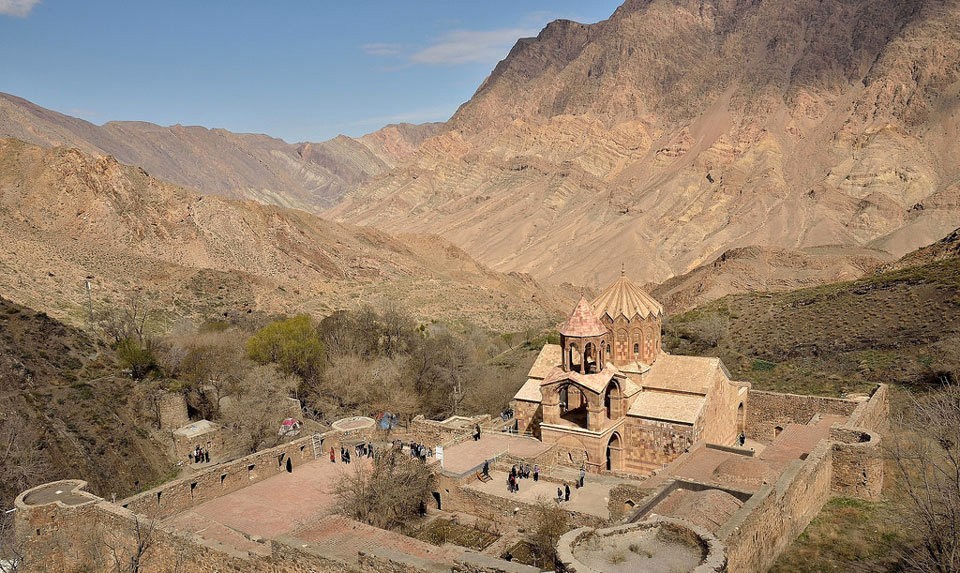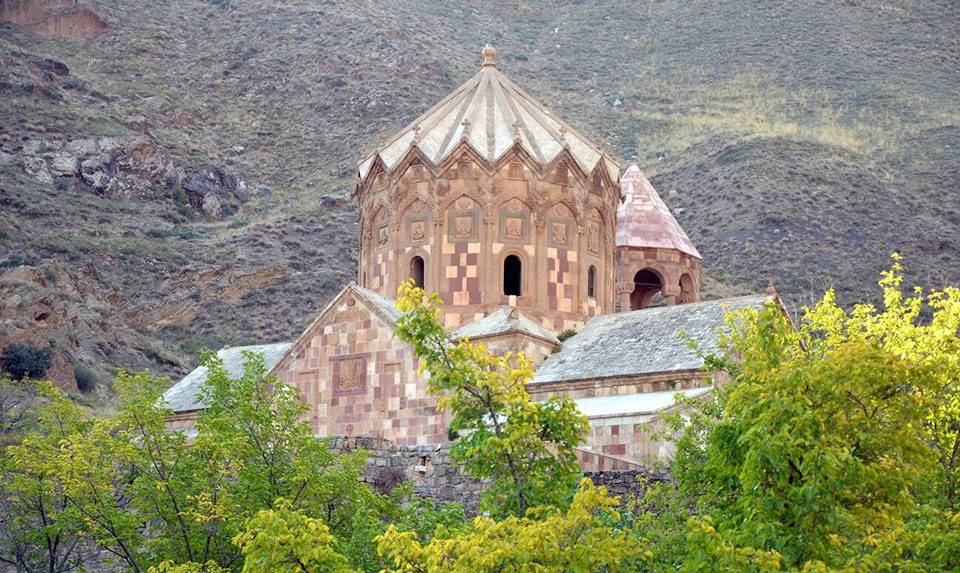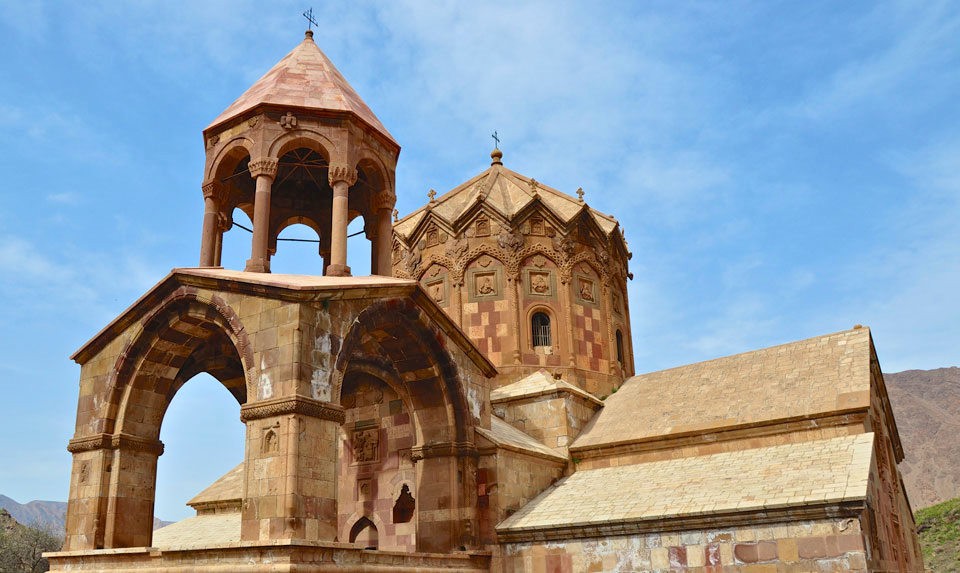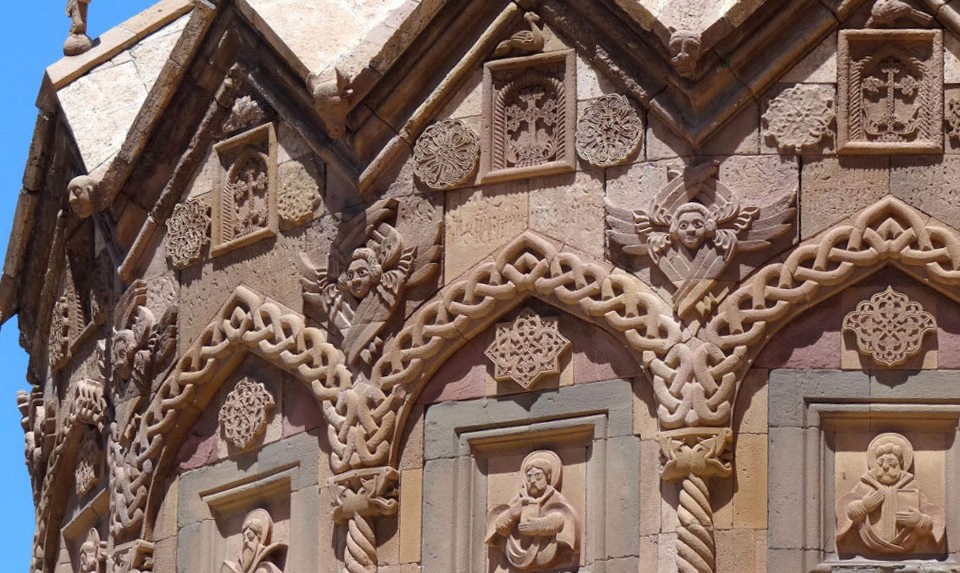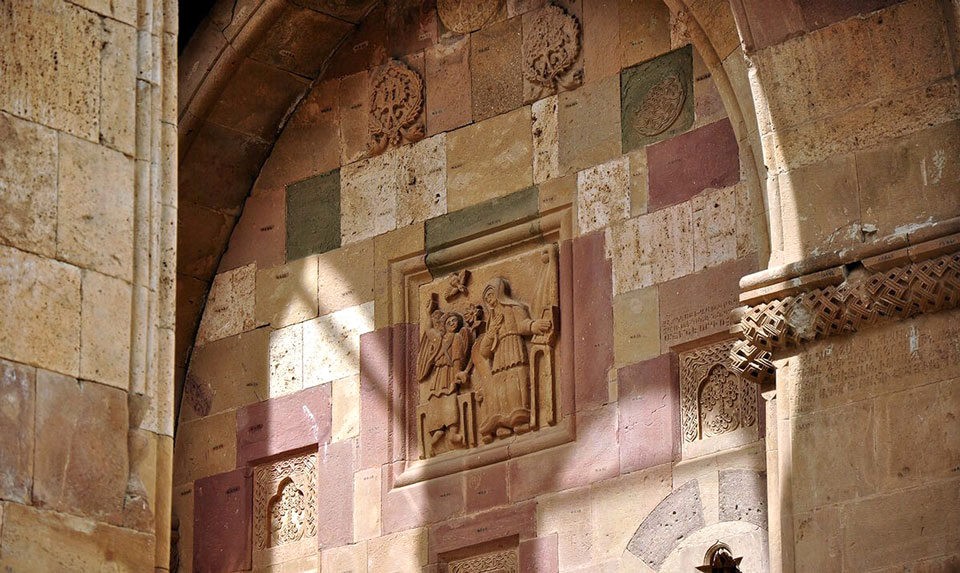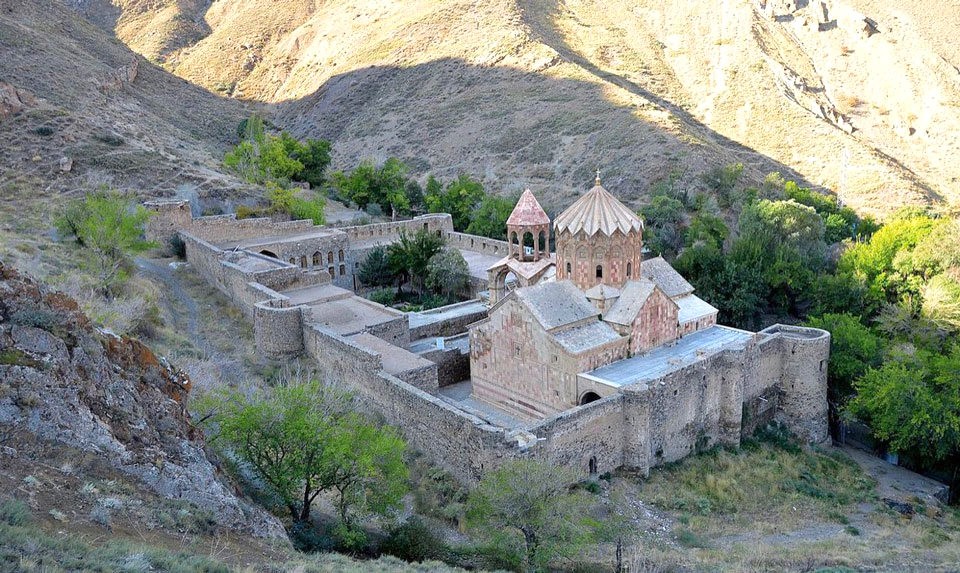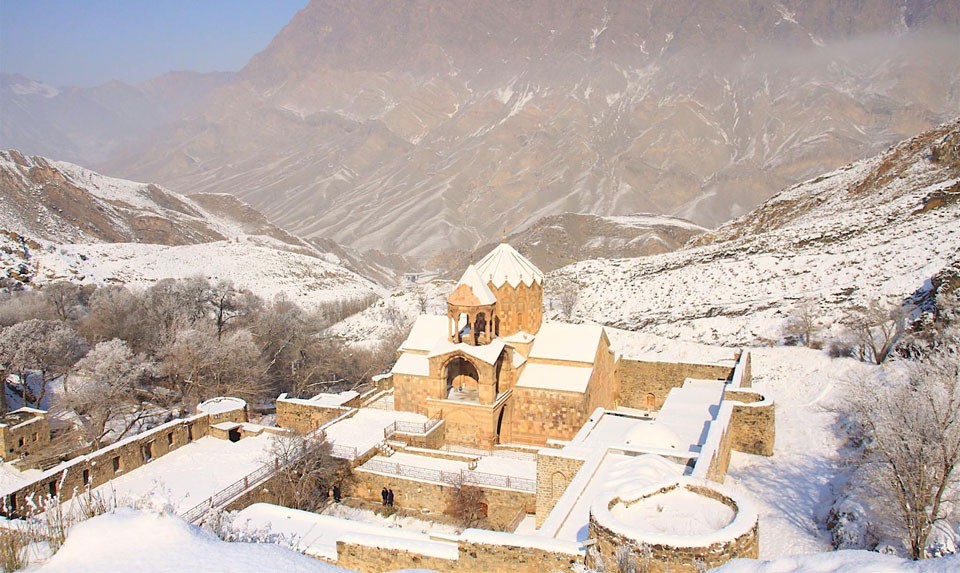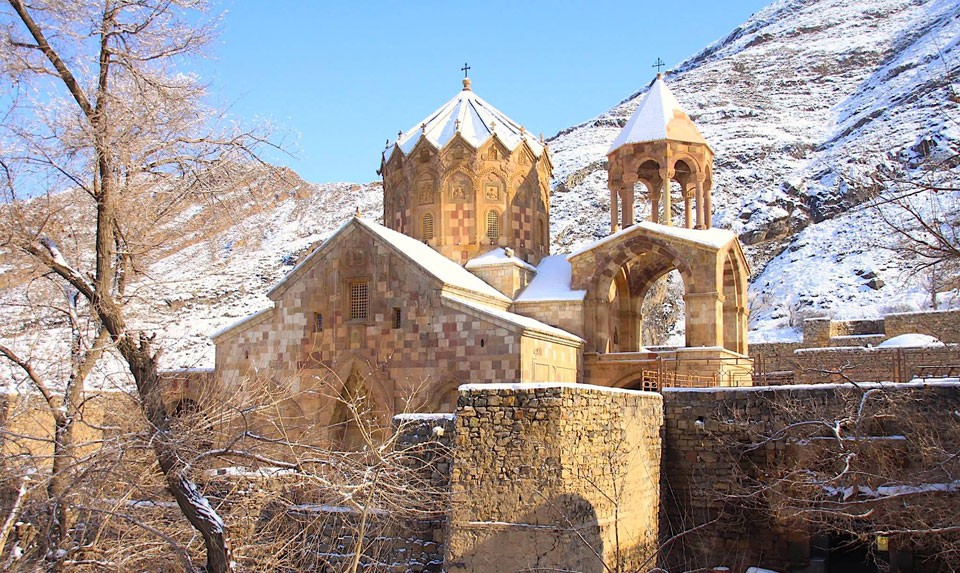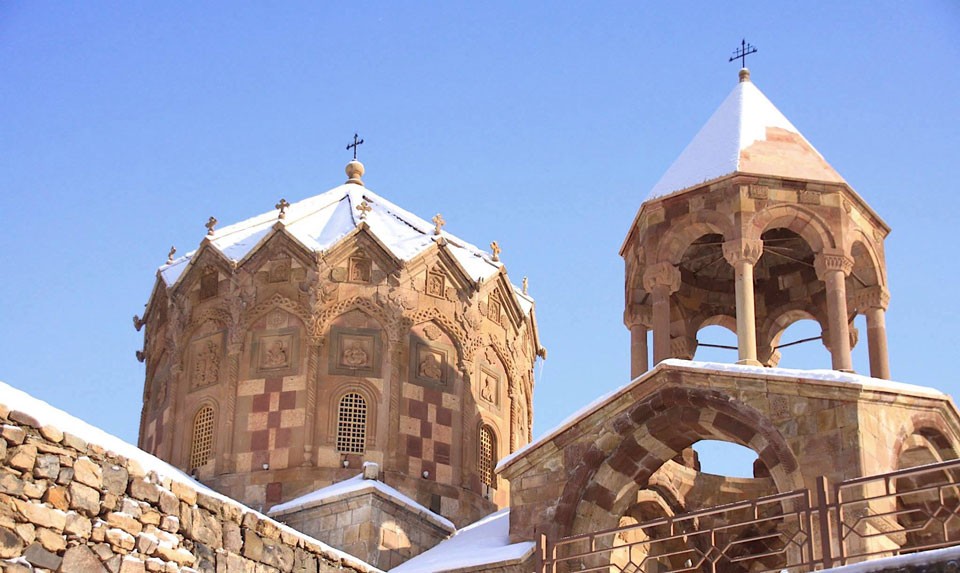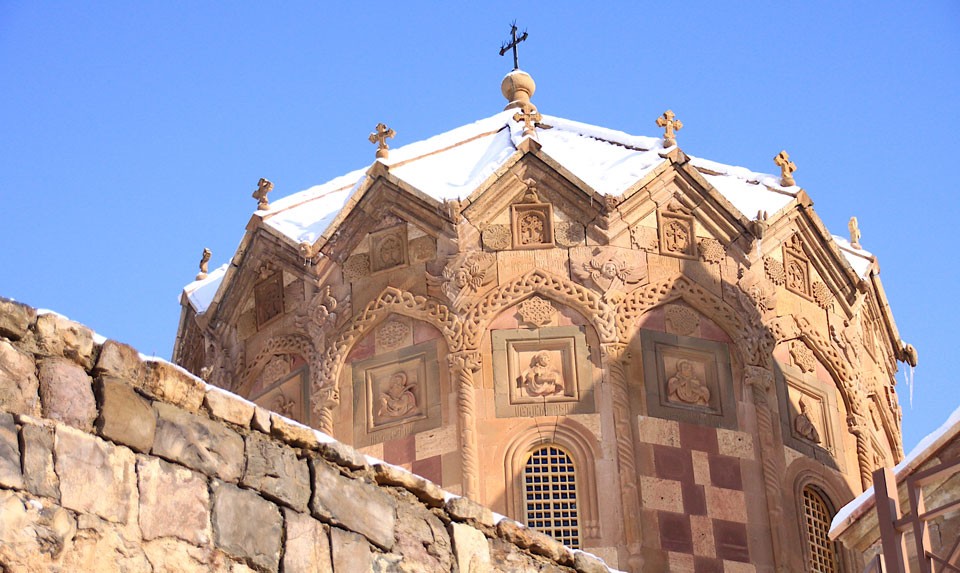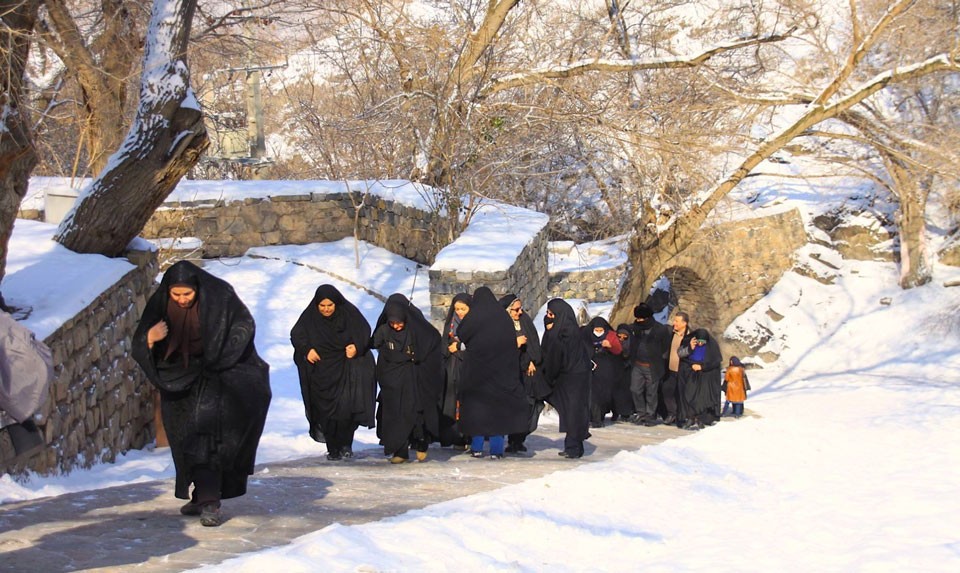Armenian Monastery of St. Stepanos in Iran: UNESCO World Heritage Site
In the north of Iran, just 15 km southwest of the city of Jolfa, on the right bank of the Araxes River, located the 9th century Armenian monastery complex of St. Stepanos (“Surb Stepanos”). The monastery is located on the slope of Mount Magarda and therefore is also known as “Magardavank”.
The monastery of St. Stepanos is one of the finest creations of Armenian architecture and is considered the second most important Armenian monastery in Iran, after the monastery of St. Thaddeus. The monastery is located in a deep canyon in the valley of the Araxes River on the site of the now abandoned Armenian village of Darashamb.
Built from smooth-cut felsic tufa, the St. Stepanos Monastery features unique 17th-century frescoes and sculptures, that date back to the late Middle Ages, and are considered masterpieces. In the Safavids era, after several earthquakes, the monastery was restored more than once.
According to the 12th century chronicler Mikael Azori, the monastery was founded by the Holy Apostle Bartholomew. The first written information about the monastery is from 976, which is contained in the “Kondak” (the official statement of the Armenian Catholicos), where the tax restrictions of the monastery estate were established.
In the same year, the monastery was rebuilt by the Bishop Babken. The consecration of the monastery was attended by the Armenian Catholicos Khachik I Arsharuni and the Armenian King Ashot III the Merciful, who gave the monastery vast possessions. The Kings's daughter Hripsime bequeathed her estate in Astapat, gardens and fields to the monastery.
In 2008, the monastery of St. Stepanos, along with the monasteries of St. Thaddeus and Dzor Dzor, was included in the UNESCO World Heritage List in the “Armenian Churches of Iran” category.
Visiting the monastery of St. Stepanos is on the itinerary of our two Iran tours:
